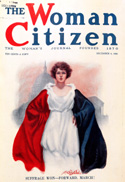
March 2017
The New York State Library celebrates Women's History Month and the centennial of full suffrage for women in the State of New York with this exhibit examining how journals' coverage of the suffrage movement changed in relation to major events such as World War I, the push for a woman suffrage amendment to the US Constitution, and the passage of the 19th Amendment, as well as the fight for woman suffrage in New York State. The exhibit also looks at the anti-suffrage movement and how suffrage journals reacted to that group.
In 1917, after a massive campaign by the suffragists, New York voters passed an amendment to the New York State Constitution granting women full suffrage. New York was the first eastern state to do so and was a major victory for the suffrage movement. While other states would pass similar measures, New York remained the only state on the East Coast to grant women full suffrage until the passage of the 19th Amendment.
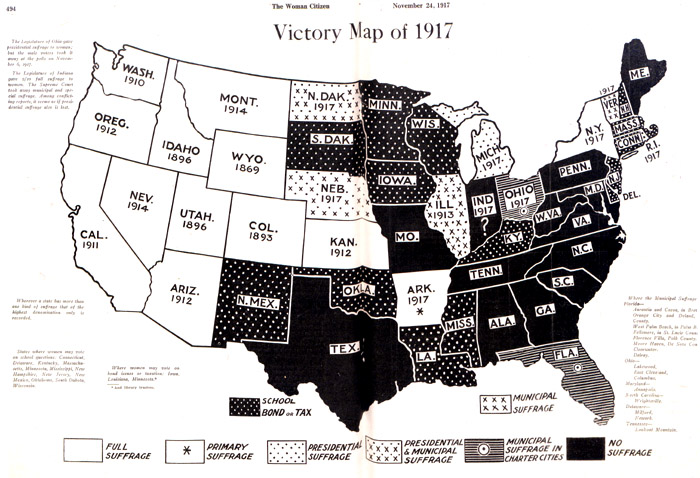
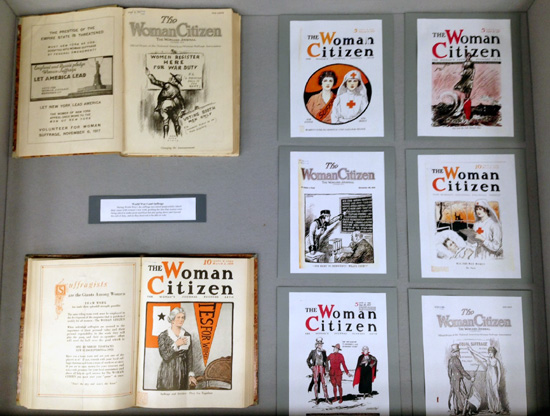
During the war, the suffrage movement purposefully linked their cause with women's war work, pushing the idea that women were being asked to make great sacrifices but also going above and beyond the call of duty, and so they deserved to be able to vote. This may have helped women achieve the right to vote in NY, which passed women's suffrage in November of 1917, about six months after the U.S. entered WWI.
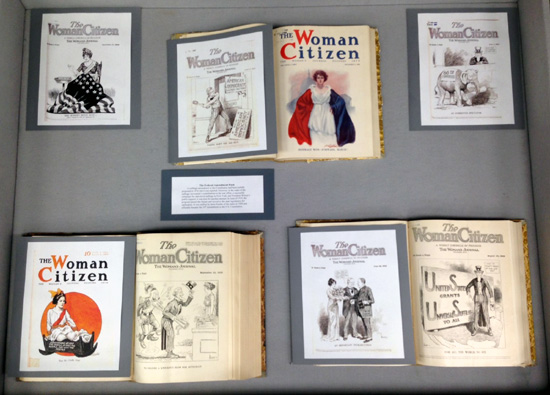
A suffrage amendment to the Constitution had been initially proposed in 1878, but it was rejected. However, in the wake of the suffrage movement's contributions to the war effort, a successful campaign for state-level suffrage in New York, and President Wilson's public support, it was time for another attempt. In June of 1919, the proposal passed the Senate and moved to the state legislatures for ratification. It was ratified by three-fourths of the states in 1920 and officially became the 19th Amendment to the U.S. Constitution.
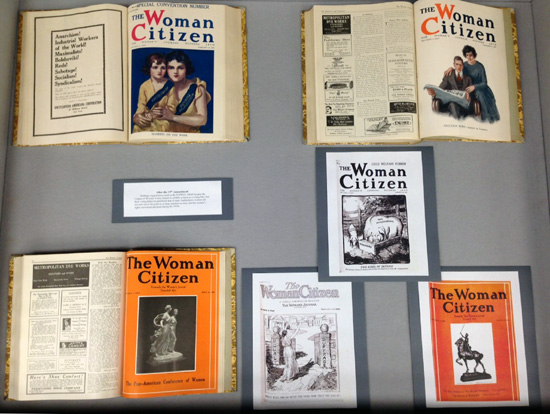
Suffrage organizations such as the National American Woman Suffrage Association (NAWSA), which later became the League of Women Voters, hoped to solidify women as a voting bloc, but women's voting behavior paralleled that of men. Furthermore, women did not turn out to the polls in as large numbers as men, and the women's rights movement declined during the 1920s.
The anti-suffrage movement in the United States began in the 1870s in response to the growth of the woman suffrage movement. The main concerns that drove the anti-suffrage cause were the fear that it would threaten the traditional family institution, that women wouldn't be able to handle the responsibility, and that giving women the right to vote would weaken their ability to serve in the private sphere.
After the 19th Amendment was ratified, many anti-suffrage women did vote, and the movement shifted towards opposing feminism and communism.
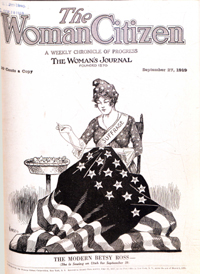
Most of the images on exhibit that favor giving women the right to vote came from Woman's Journal/Woman's Journal and Suffrage News/The Woman Citizen. Founded in 1870 in Boston, Massachusetts as a weekly newspaper, the Woman's Journal incorporated two prior periodicals: The Agitator and Woman's Advocate. It refused to carry advertisements for tobacco, liquor, or drugs. In 1910 it absorbed Progress, the official paper of NAWSA and was renamed Woman's Journal and Suffrage News.
The name changed once again in 1917 when the journal was purchased and merged with The Woman Voter, the official journal of the Woman Suffrage Party of New York City, to become The Woman Citizen. A free subscription was given to every U.S. Congress member. In addition to women's suffrage, the journal covered issues like child labor. After the 19th Amendment was ratified, the journal focused on political education for women. The journal also aimed to shift its image to a less radical one and attract a readership of middle-class women.
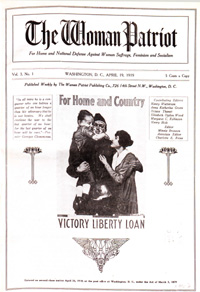
For the anti-suffrage cause, a prominent journal used in the exhibit was The Woman Patriot, a bimonthly paper that came from the merging of Woman's Protest and Anti Suffrage Notes, two anti-suffrage journals. It was the official paper of the National Association Opposed to Woman Suffrage (NAOWS) and was published from 1918 to 1932.
In 1922 the NAOWS reorganized as the Woman Patriot Corporation after the Supreme Court upheld the 19th Amendment. The Woman Patriot continued promoting anti-feminist rhetoric until 1930. The paper's subtitle varied, but generally centered around defending the family and the nation from feminism and socialism.
As part of New York's recognition of Women's History Month, the NYS Office of General Services created a number of exhibits celebrating 100 years of women's suffrage in New York State. The exhibit Women's Suffrage in New York State, which was located in the Capitol corridor (connecting the Capitol to the Empire State Plaza at the Concourse level), displayed pro- and anti-suffrage propaganda including reproductions of posters and other resources from the New York State Library's collections such as the posters shown below.
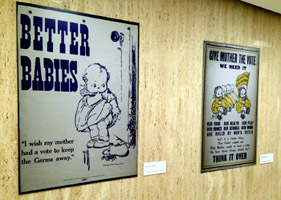
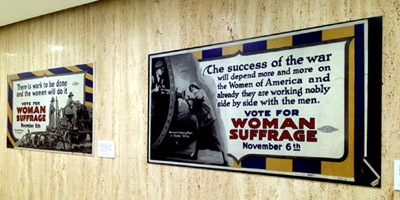
Exhibit curated by Marta Kelly